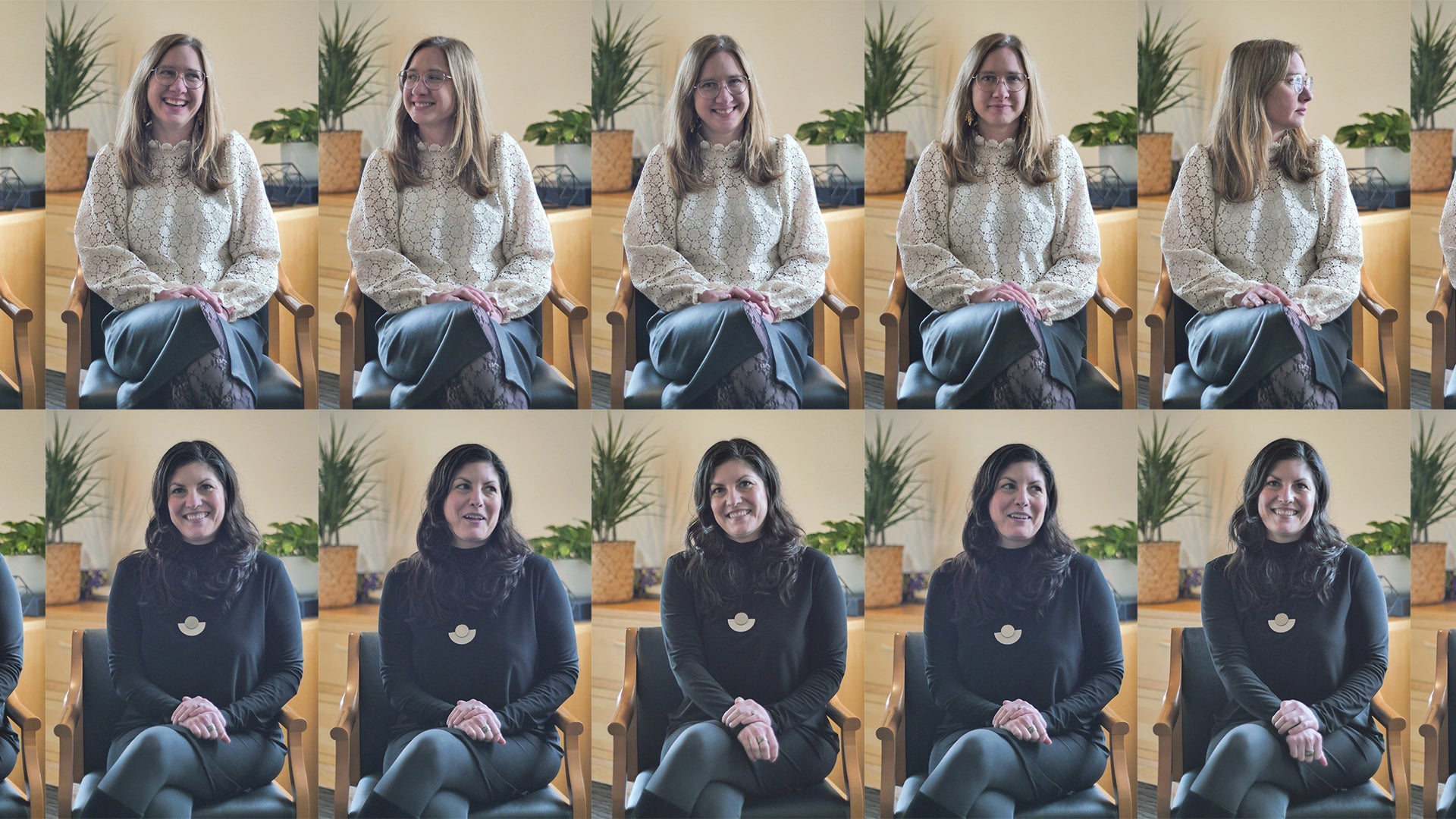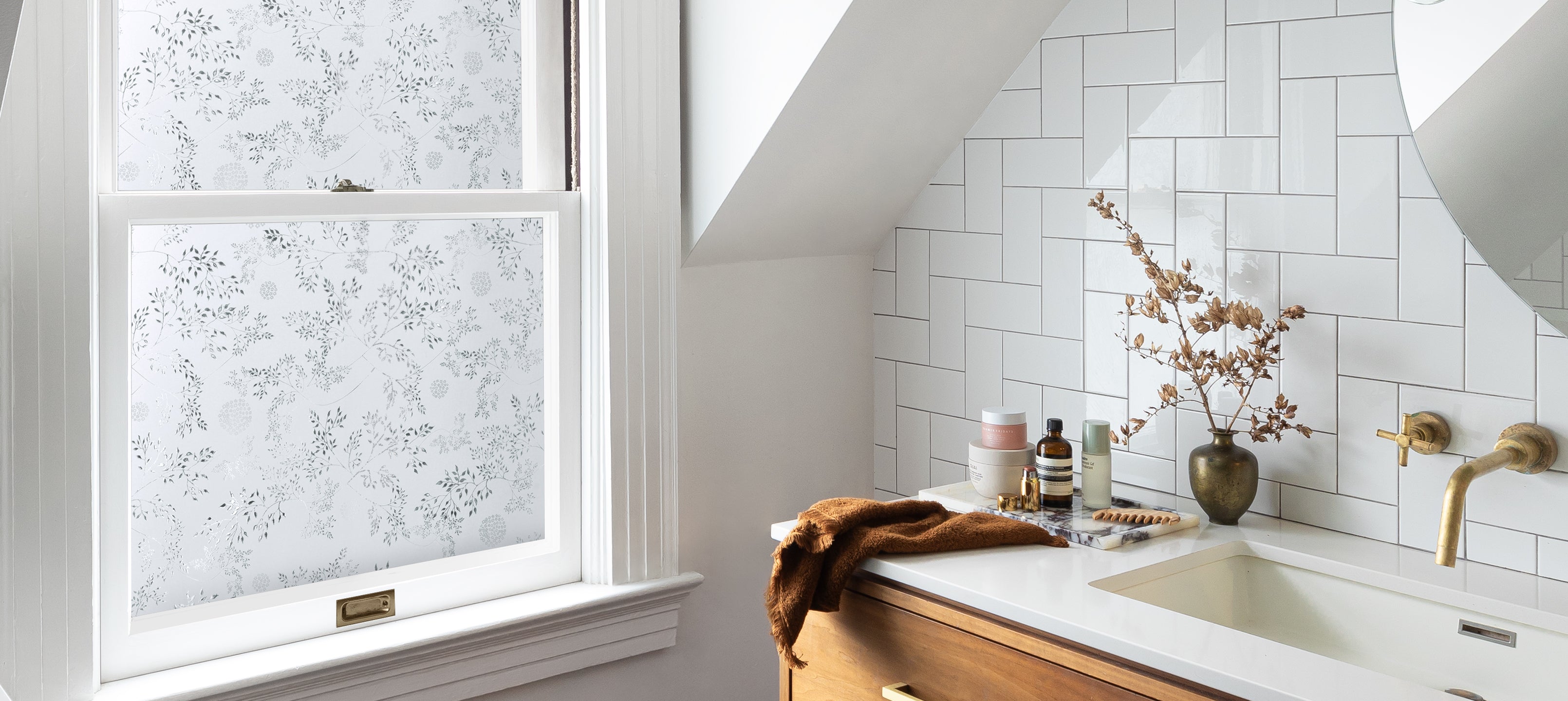At Artscape, the creative force behind every product is driven by the vision and expertise of two dedicated designers, Kate Troyer and Christin Dunbar. Kate and Christin delve into a few of their biggest design influences, discern emerging trends in the field, and explore the role of craftsmanship in transforming concepts into physical products.
With a combined decade-long working history at Artscape, both Kate and Christin have honed their craft, injecting fresh perspectives and innovation into every project they undertake. Their journey through the intricate world of surface design offers a wealth of insights into the evolving landscape of artistic expression and functional aesthetics.
Kate and Christin uncover the stories behind Artscape’s designs, their reflections on the industry's trajectory, and their aspirations for the future of window film.
How did you get into design?
Kate: The arts have always been a passion of mine since I was a small child. Making things from unexpected materials and learning to paint and draw allowed me to explore my creativity without boundaries or rules. Personal and authentic expression through the arts was a driving force for me, so after studying fashion design in Italy, I felt a strong pull to merge my love for studio art with design to create something fresh and new.
Christin: Growing up, I always gravitated towards creative projects, anything that I felt I could express myself through. I didn’t think it would be possible to have a career in the arts that could provide me with enough income for a comfortable living, so I pursued my next passion, marine biology. While in school, I soon discovered that the sciences were not the right fit for me. Kind of lost and looking for answers, I befriended a fellow classmate who said they were studying graphic design. The oddest thing happened, my gut immediately told me that design would be my future. Without knowing much about the practice at all, I changed my major the next day and the rest is history.
Can you talk a little about your background?
Kate: I grew up in a small town in Wisconsin, and with the support of my art teachers and family, I pursued fine art and art history as a life path. I studied general arts in undergraduate school, but always felt a strong pull towards textiles and fashion. In graduate school, I earned an MFA in textile art and design. My focus was more conceptual, and I was able to experiment with merging art and design in unexpected ways. In addition to my work at Artscape, I had a women’s ready-to-wear brand rooted in expressive surface design. I also built a large format, textile hand-screenprinting studio and collaborated with other companies and designers. It was a fulfilling and excellent way to meet other creatives in the area. My passion for design and the arts continues to be a strong part of who I am and what I love. Making beautiful things always brings me joy.

Christin: I come from a very traditional graphic design background. My professors distilled design theory to its core elements, where Le Corbusier and Paul Rand reigned supreme. I believe this approach allowed us to focus on the principles of what makes good design rather than getting too caught up in the technical details. After graduating, I took a job at the action sports company called Dakine. I started out as a graphic designer and quickly found myself immersed in surface design, creating textiles for luggage and apparel. I couldn’t have been more fulfilled with my job. At the same time, I started to realize that I had a desire to continue to express myself beyond my day job. I started working on my own artwork with weaving and thread and had shows around the Hood River and Portland area. My work and lifestyle ended up keeping me in Hood River for close to 15 years, but I was ready for a change and found myself in Portland at Artscape. The work with Artscape involved surface design but needed to be interpreted through the lens of stained glass and dimensional textured privacy films. This was a fun challenge. Artscape has been a wonderful journey, and I’m really excited to share our upcoming projects with everyone.

Can you share some insights into your creative process when designing window films?
Kate: I look to historical design movements, influences in nature, and of course, examples of real glass. Many of our designs are conceptualized to look like real stained, etched, or textured glass, and we aim to create designs that are classic yet current.
Christin: At Artscape, we strive to provide a product that is authentic and has the visual characteristics of real glass. To achieve this, I study past and contemporary stained glass artists’ techniques and approaches. Learning from them helps me to create pieces that real artisans would be able to execute. I also look at the patterns and techniques for vintage and modern privacy glass. Through trial and error, I design patterns that can emulate the realistic and dimensional qualities of actual glass.
How do you approach balancing traditional design elements with contemporary trends in your work?
Kate: I try to stick to one area of the design that remains traditional in approach. It might be that the palette is more muted and classic while the execution of the composition has a more contemporary approach. Or perhaps the composition has more order and a more classical approach, but we take some creative liberties to customize textures or explore color to make the design relevant and current.

Christin: I believe in offering designs to our customers that evoke familiarity while still bringing in more contemporary elements. It allows for our customers to try on an aesthetic that pushes their comfort zones and gives designers the opportunity to create with nuance and innovation. This can be a good challenge, finding that delicate balance of commercial appeal and progressive designs.
How do you stay inspired and motivated?
Kate: I don’t need to look far for motivation and creativity. I really get inspired by just looking at the world around me. I look to the shapes, textures, and colors that I see in nature in the Pacific Northwest, which always sparks new ideas for design. Some of my influences include the Art Nouveau and arts and crafts movement, historical architecture, and design or art masters of the past like William Morris and Tiffany glass. I also stay motivated by being involved in a creative community of makers in the area across the art and design disciplines.
Christin: That's a hard one to describe because it’s inherent to my makeup. I absolutely crave making things. In addition to doing design work during the day, I continue my expressions at home. Whether that’s through weaving, cooking, baking, making art pieces, installing laser art shows, or landscaping our yard. It’s both a blessing and a curse that it can be impossible for me to hit the halt button on staying motivated.

In what ways do you think window film design can contribute to storytelling or creating atmospheres within a space?
Kate: Individual style is so personal, and design choices becomes an extension of personal expression. I love to be a part of that process by offering window films in many styles that people can connect and identify with. Our window films can create a specific ambience or tell a different story depending on the environment. A window film that has pattern can be the focal point of a room or a film that is more subdued might help support another element within a space. These can help tell a story about an individual or family and make them feel at home.
Christin: It’s all about vibing out your space right? And having good lighting is key. In addition to providing privacy, our window films allow natural light to filter through rooms, creating a soothing glow. Spaces can feel dreamy and soft through our etched designs, or more bold and upbeat with our more color-saturated films. Artscape customers can choose a variety of designs and this in itself can be a form of self-expression.
Can you talk about the importance of community and collaboration within the design industry, especially for women designers?
Kate: I think it is important to consider the potential crossover and collaboration between art and design disciplines, from interior designer, to painter, to fashion designer for instance. An interior designer might have a different perspective on window film design than a ceramicist or painter, but there is value in both. Being open to how we approach and view design is important. Through collaboration we can generate new and innovative ideas. It helps us keep things fresh and avoid narrow approaches in design.
Christin: I feel like a lot of creatives tend to become personal islands from time to time. Wrapped up in their own world, and maybe a bit too shy to share their successes and failures. Connecting with other creatives can give ourselves the grace to forgive our missteps and failures because we realize that we're not alone. There’s a whole group of people out there who can sympathize and elevate you to be a better creative. I believe it’s especially important for women to connect with other women in the industry. No one can better help or support you, than the ones who have walked a similar path.

How do you see the future of window film evolving, and what role do you hope to play in shaping it?
Kate: I think there is so much possibility in the solar window film category. The needs for privacy film application have not been fully explored yet. Not only can a film be decorative, but it can also provide other benefits to the end user. I hope we continue to do more research and offer films that are on the cutting edge of the category now and into the future.
Christin: With climate change, we are seeing customers increasingly looking for performance films that reflect the sun’s harmful ultraviolet rays. Performance films can lower the interior temperature of the home and reduce the electricity bill due to the thermostat not needing to work so hard. Currently, these types of products are very utilitarian in aesthetic and don’t offer much in decorative options to the consumer. Hopefully, we can expand our offering to include these performance films but with the quality and design options that the Artscape customer has come to rely on.
Stay in touch with more creative happenings by following Kate and Christin and Artscape on Instagram.




